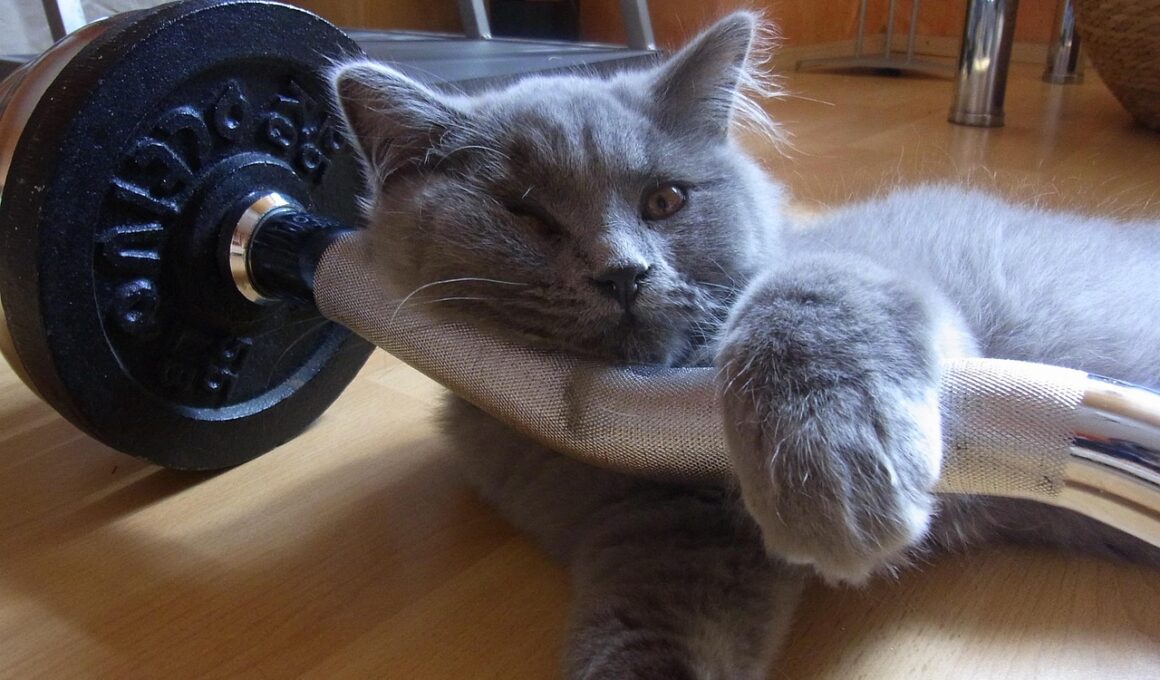Choosing the Right Electronic Training Device for Your Cat
When it comes to training your cat, selecting the right electronic training device can greatly influence the effectiveness of your sessions. Electronic training devices come in various forms, including collar-based systems, clickers, and automated feeders. Each type brings its unique features and advantages, which means you should evaluate their suitability based on your cat’s personality and needs. Consider factors such as the extent of training you plan to undertake, your cat’s current behavior problems, and your flexibility for adjusting to the device’s training methodologies. Moreover, research different products for features such as adjustable sensitivity settings, range, and battery life. The right device can help build a positive association with training, leading to better behavior outcomes. You can also read reviews, consult applications for training tips, and even seek advice from fellow cat owners online. The ultimate goal is to choose an electronic device that complements your training style and your cat’s temperament, ensuring your efforts yield the best results for both of you during the training routine.
Understanding the specific needs of your cat is essential to select the appropriate electronic training device. Cats can be easily stressed by abrupt changes or stressful environments. Thus, choosing the right device means evaluating how responsive your cat is to training techniques. Some cats may respond well to positive reinforcement methods, while others might need a more moderate approach using mild shocks or vibrations. Always encourage rewarding behavior instead of punishment, as cats learn best in a low-stress environment. However, consider that some devices can be set to deliver gentle stimulation or sound alerts that give feedback without causing distress. Before commencing training, ensure the device aligns with your cat’s temperament. It’s important to gradually introduce and familiarize your cat with any new device. Start by allowing them to explore the device while it’s turned off, explaining the sounds, and then slowly implementing it into training sessions. By taking these steps, the process becomes less stressful and more effective, ultimately leading to a successful learning experience for your furry friend.
Features to Look for in Electronic Training Devices
When considering electronic training devices for your cat, look for features that enhance usability, safety, and effectiveness. Many electronic collars provide adjustable intensity levels, allowing you to customize the stimulation according to your cat’s comfort level. It’s also vital that the collar fits securely, allowing your cat to move freely without the risk of injury. Some advanced models are equipped with built-in GPS, enabling you to track your cat’s location, which can be invaluable for outdoor training. Consider choosing a device with a waterproof design, especially if your cat enjoys outdoor adventures or is likely to encounter wet conditions. Additionally, some training devices come with app connectivity that allows you to monitor your cat’s progress and adjust settings via your smartphone. This feature can help track habits, making the training process more efficient. Always ensure that the product you select complies with safety standards, as improper electronic devices can harm your pet. Reading customer reviews can provide insights into how effective these features truly are, helping solidify your decision.
Another critical factor is the battery life and charging options for your electronic training device. Opt for devices that come with long-lasting batteries or quick charge capabilities, as training sessions can often be interrupted by the need to recharge. Further, ensure the device is equipped with indicators displaying battery levels, so you can proactively keep on top of any charging requirements. Corded options are less convenient and can limit your cat’s movement, making wireless devices a preferred choice. Pay attention to the device’s range, especially if you have a larger home or want to train your cat in outdoor environments. Look for devices that operate effectively over long distances, which can ensure that you’re always in control during training sessions. Also, take into account how portable the device is, as this can greatly affect your ability to travel or take it on outings. A compact design that easily fits in your bag can be beneficial for training in various locations, making it versatile for different scenarios.
Using Electronic Training Devices Effectively
Effectively utilizing electronic training devices requires developing a well-structured training plan. Before starting sessions, clearly outline your goals and what behaviors you’d like to correct or encourage. Consistency is critical, so ensure everyone in the household understands how to use the device and applies the same training methods. Begin training in a familiar environment, and gradually increase the complexity of distractions as your cat starts to learn. Positive reinforcement remains a crucial aspect of successful training; be sure to follow up any correction with praise or treats, bolstering positive associations. It’s essential to allow your cat to understand the link between their behavior and the feedback from the device. Humanely adjusting your training methods based on your cat’s progress is vital. Take breaks as needed to avoid overwhelming your cat; training should be an enjoyable experience rather than a negative one. Always monitor your cat’s response to the device, and adapt the method based on their comfort and learning pace throughout your training journey.
Maintaining your electronic training device and ensuring it remains in good working order is equally important for effective training. Regularly check the device for any damage or wear and tear, particularly on collars that are exposed to daily use. Cleaning the device can prevent odor build-up and maintain hygiene for your pet. Many manufacturers provide specific cleaning guidelines, so following them can enhance durability. Feedback indicators like light signals or sounds should be functioning correctly to maintain effective training. Familiarize yourself with troubleshooting techniques to resolve minor issues without needing a repair. Keeping an eye on updates released by the manufacturer can also be beneficial, as software updates may introduce new features and improve performance. Being proactive in device maintenance can ensure that you enjoy reliable performance when it’s time to train. When the device works effectively, it minimizes any interruptions during your training sessions, allowing both you and your cat to focus on learning together, leading to better outcomes in behavior and responsiveness.
Final Thoughts on Choosing Electronic Training Devices
In conclusion, selecting the right electronic training device for your cat requires thoughtful consideration of numerous factors. Understanding your cat’s specific needs and behaviors will help you determine which device features are necessary for success. From the range and sensitivity settings to durability and maintenance, every aspect can significantly impact the training experience. Additionally, your dedication to applying consistent and humane training methods will ultimately influence your cat’s progress and wellness. Remember that while electronic devices can enhance training efficacy, they should be part of a broader approach that includes regular play and bonding time. Choose devices that you feel comfortable using and that align with your training philosophy. Always prioritize your cat’s comfort, safety, and well-being in your training efforts. Tailor your training sessions to suit your pet’s unique personality and penchant for learning, as this will ensure a fulfilling experience for both of you. With the right tools and mindset in place, you will set the stage for a well-behaved and content cat.


